Product Description
After completing this video course, you will be able to perform jazz on the acoustic bass well enough to play in combos with other musicians and players of similar experience to you, and potentially some who may be at more advanced levels than you.
I will show you basics like proper hand positions and tuning. We will also be covering more difficult topics such as constructing a walking bass line, 12-bar blues progression, jazz rhythm and syncopation.
What can this product offer me?
- The lessons offer you the ability to create and develop a solid foundation in jazz acoustic bass playing, thus eventually enabling you to work in combos with other people.
- You will find this course useful in providing you with a strong understanding and knowledge of being a bassist.
- You’ll have more control and be capable of producing different kinds of sounds and tones beautifully and smoothly on the upright bass.
Who is this for?
- Novice/Beginner
- This is complete education and training for a beginner with an interest in jazz acoustic bass playing and/or for an individual with experience on the electric bass guitar who wants to now enter the jazz world and start playing jazz style on the acoustic bass.
- No special requirement to begin your studies on this wonderful instrument.
Lecture list
|
Lecture series 1: Holding the acoustic bass and proper positioning of the left and right hands
|
14:33 | |||
| Lecture 1 | 1:27 | |||
| Provides an overview of the things needed to physically manage the instrument. | ||||
| Lecture 2 | 2:45 | |||
| A very quick and simple manner of properly holding and positioning the bass against the body. | ||||
| Lecture 3 | 2:05 | |||
| An easy method for forming a relaxed and efficient position for the left hand. | ||||
| Lecture 4 | 2:35 | |||
| An important distinction between electric and acoustic bass fingering is described. | ||||
| Lecture 5 | 3:47 | |||
| A variety of options for right hand position are demonstrated. | ||||
| Lecture 6 | 1:50 | |||
| A summary of the topics discussed and presented in Lecture Series 1. | ||||
|
Lecture series 2: Tuning the acoustic bass, using a metronome, and open string exercises
|
18:23 | |||
| Lecture 7 | 1:28 | |||
| Provides an overview of preparation before playing. | ||||
| Lecture 8 | 4:11 | |||
| How to use open strings and your own voice and ear to tune the bass. | ||||
| Lecture 9 | 4:20 | |||
| Provides a rationale for using a metronome to develop reliable time and demonstrates how it may be used in practice. | ||||
| Lecture 10 | 3:44 | |||
| Demonstration of open string exercises used to develop a consistent pulse. | ||||
| Lecture 11 | 2:56 | |||
| A more advanced group of open string exercises used to develop a consistent pulse. | ||||
| Lecture 12 | 1:42 | |||
| A summary of the topics discussed and presented in Lecture Series 2. | ||||
|
Lecture series 3: Learning the half position and first position on the fingerboard
|
14:00 | |||
| Lecture 13 | 1:00 | |||
| Demonstrates the location of all available notes and which fingers play these notes in the lower positions. | ||||
| Lecture 14 | 1:34 | |||
| Demonstration of proper finger location in half position | ||||
| Lecture 15 | 2:16 | |||
| Identifies and names every note within half position | ||||
| Lecture 16 | 2:57 | |||
| Demonstration of proper finger location in first position | ||||
| Lecture 17 | 2:36 | |||
| Identifies and names every note within first position | ||||
| Lecture 18 | 2:20 | |||
| A summary of the topics discussed and presented in Lecture Series 3. | ||||
|
Lecture series 4: Chord/Sound families, the 12-bar blues, and root/leading tone motion in bass line construction
|
15:48 | |||
| Lecture 19 | 1:23 | |||
| Provides an overview of the things needed to physically manage the instrument. | ||||
| Lecture 20 | 1:41 | |||
| A very basic description of one of the many chord progressions used in the 12-bar blues. | ||||
| Lecture 21 | 2:20 | |||
| A common 12-bar blues progression is demonstrated for use in learning bass line construction. | ||||
| Lecture 22 | 3:32 | |||
| The idea of the use of roots and leading tones is demonstrated as a means for a basic approach to bass line construction. | ||||
| Lecture 23 | 4:58 | |||
| A discussion of three essential chord families and how to choose notes that define those unique sounds. | ||||
| Lecture 24 | 1:51 | |||
| A summary of the topics discussed and presented in Lecture Series 4. | ||||
|
Lecture series 5: Mastering the tools needed for constructing your own original walking bass lines
|
15:46 | |||
| Lecture 25 | 2:14 | |||
| Provides an overview of the things needed to further develop a functional and musical walking bass line. | ||||
| Lecture 26 | 2:27 | |||
| A scalar approach to bass line construction is discussed and demonstrated. | ||||
| Lecture 27 | 1:58 | |||
| A chordal approach to bass line construction is discussed and demonstrated. | ||||
| Lecture 28 | 2:43 | |||
| A chromatic approach to bass line construction is discussed and demonstrated. | ||||
| Lecture 29 | 3:34 | |||
| A discussion and demonstration of the importance of the contour (shape) of the bass line. | ||||
| Lecture 30 | 2:47 | |||
| A summary of the topics discussed and presented in Lecture Series 5. | ||||
|
Lecture series 6: Jazz Rhythm and Syncopation Overview: What, How, and When?
|
17:11 | |||
| Lecture 31 | 1:40 | |||
| Provides a description of the importance and relevance of rhythm in bass line construction. | ||||
| Lecture 32 | 2:34 | |||
| Provides an overview of the idea of 12/8 and 4/4 meter being superimposed to create the triplet swing feel. | ||||
| Lecture 33 | 2:45 | |||
| A discussion of why we insert rhythms and syncopations into the bass line. | ||||
| Lecture 34 | 3:54 | |||
| A demonstration of how to insert rhythmic embellishments into the bass line and a demonstration of some of the most common rhythms used in bass lines. | ||||
| Lecture 35 | 4:03 | |||
| A demonstration of when to insert rhythmic embellishments into the bass line and examples of how we use form and harmony to determine the best times to insert rhythms. | ||||
| Lecture 36 | 2:13 | |||
| A summary of the topics discussed and presented in Lecture Series 6. | ||||
Curriculum
Instructor Biography
Two-Time Grammy Award-Winning Bassist Todd Coolman is among the more in-demand musicians on the New York music scene today. Since moving to New York in 1978, he has performed and/or recorded with a virtual “who’s who” of jazz artists including Horace Silver, Gerry Mulligan, Stan Getz, Benny Golson, Art Farmer, Tommy Flanagan, Ahmad Jamal, Lionel Hampton, Benny Goodman, and numerous others.
Coolman enjoyed a 25-year stint with the James Moody Quartet and continues to actively perform today with an impressive array of artists including Jon Faddis and Renee Rosnes.
Todd has released four CDs as a leader, Tomorrows, Lexicon, Perfect Strangers and Sunnyside Records will release Collectables, on May 20, 2016. He has also written two books, The Bass Tradition and The Bottom Line. You could purchase them on www.toddcoolman.org
Todd is also in demand as a clinician and lecturer at universities throughout the world, and is frequently sought after as a writing and research consultant for jazz history and CD liner-note projects. Todd received his Ph.D. in music from New York University. In whatever spare time he can muster, Todd enjoys fly-fishing, bird watching, and outdoor activities in general.
Testimonies and Quotes
“Hey bass players! Do yourself a favor and check out these online bass lessons from Dr. Todd Coolman. I’ve been a fan of Todd’s bass playing for years, and had the good fortune to teach alongside him in workshops. Todd is at home onstage with his own groups and with jazz legends like James Moody, Horace Silver and Dizzy Gillespie. He’s also a walking encyclopedia of bass information, and one of the most insightful and effective teachers you’ll ever meet. Don’t miss this chance to learn from this master musician.”
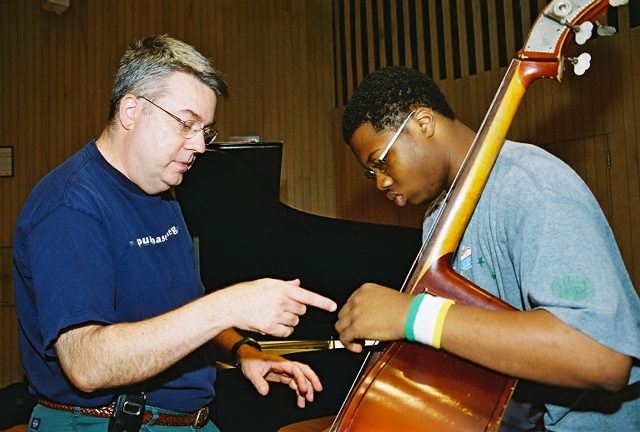
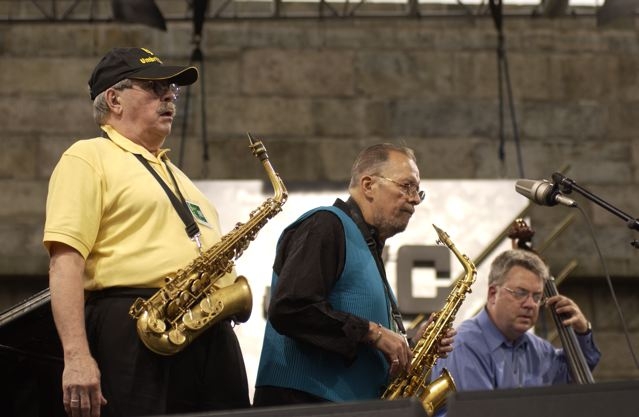
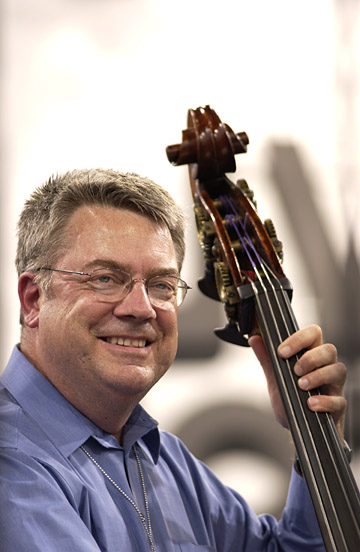
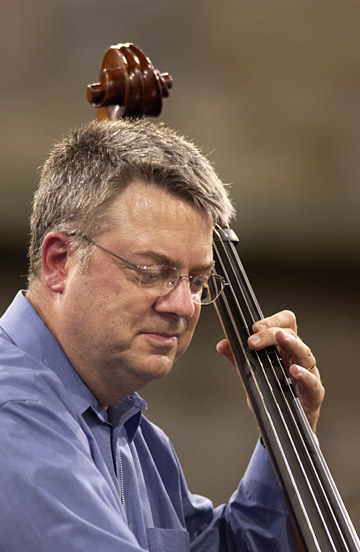
Related courses students viewed



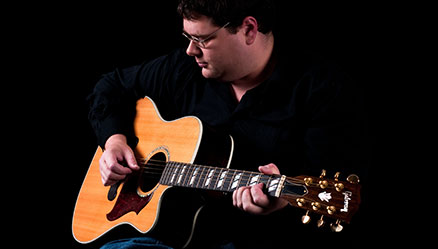


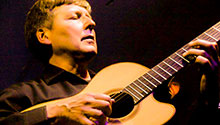

Jazz Acoustic Bass Playing For The Novice